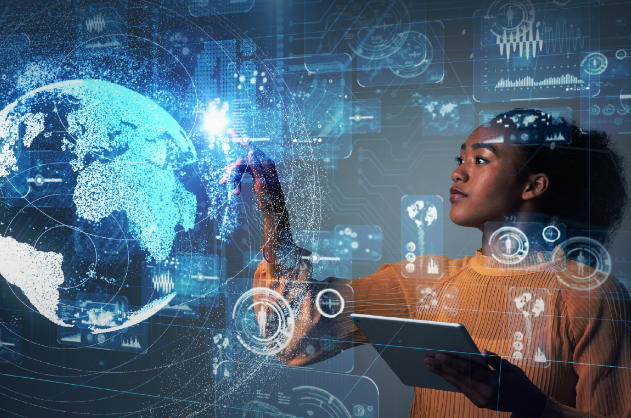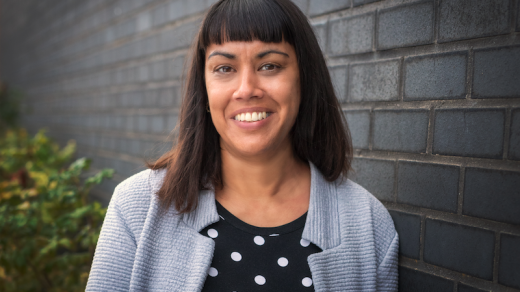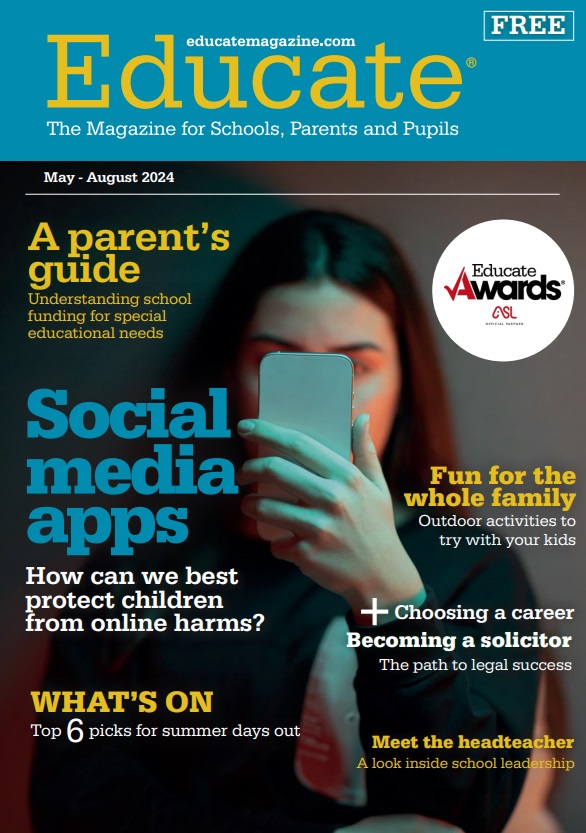How is AI set to change life in school and at home?

In 2023, artificial intelligence (AI) is not what we once knew it to be. Over the past 70-80 years, AI has rapidly evolved from computers that can perform basic functions and play chess, to hoovers that can autonomously clean homes, voice-activated virtual assistants, self-driving cars, and even robots that can hold conversations so realistic that they almost seem human.
Essentially, artificial intelligence is a machine that has the ability to simulate that of human intelligence: thinking, learning, and problem-solving. Now a necessity in the everyday life of most people, AI has also made its way into the workplace, assisting employees with tasks that are possibly on the more mundane and repetitive side by taking on the roles of analysts, security, chatbots, and more.
The education sector in particular has witnessed a huge rise of AI involvement in recent years. Its ability to save teachers’ time means that artificial intelligence has become a valuable resource in schools. Not only can it be used to complete administrative tasks, but to also focus on the performance of students.
Rather than marking each student’s multiple-choice tests one-by-one and by hand, teachers can input this data into a computer or instruct their students to complete the test online, where the technology allows for students to receive their grades upon completion. This also means that data can be collected about how students have performed, informing teachers where to focus their lessons next. As a result of time saved in the classroom, more time can be allocated to teaching.
Some AI technologies can even be used to interact with staff members and students on a more personal basis and in a physical capacity. For instance, St John Bosco Arts College in Croxteth, Liverpool, recently became the first school in the UK to trial advanced robotics technology with ‘BellaBot’.
BellaBot is able to collect and hand out supplies, show visitors around the school, and develop emotional connections with those it speaks to – even recommending books to students. Headteacher of St John Bosco Arts College, Darren Gidman, said: “The robots will provide a unique and engaging learning experience for our students, preparing them for the modern world and its evolving technologies.”
When it comes to studying at home, students can benefit from an array of AI software that supports learning by providing access to subject-specific content and posing questions to its users. Strengths and weaknesses are identified and then used to create personalised questions and lesson plans.
An example of this is Duolingo, an app used by children and adults alike to learn and practice new languages. During a lesson, Duolingo keeps track of which questions the user may have gotten incorrect and ensures it asks them again. In its ‘fill in the blank’ questions, the AI generates sentences that includes words that were recently learnt to find out if the student requires more practice with them, and when testing pronunciation, AI is used to figure out if sentences were pronounced properly.
Evidently, artificial intelligence allows for a lot of learning personalisation due to its ability to adapt to what students need and target areas of weakness. Many programmes also offer its consumers the freedom to tailor learning to their own interests and needs which is likely to encourage further engagement with education. However, it can be argued that despite these features, AI does not offer true personalisation to a full extent due to the confinements of the apps, robots, or machines it may exist in.
Although some highly advanced AI systems can learn from users and expand their own knowledge, they currently cannot truly and wholly capture the full essence of a teacher. Teachers are present in a way that artificial intelligence cannot be, and provide the human interaction needed to support the development and education of children. They can connect with and adapt to students’ requests at an instant in addition to offering personal, lived, advice and experiences.
Recently, the ethics of AI and its risks to education hit the headlines due to the emergence and rise of the highly intelligent chatbot, ChatGPT. Perhaps controversially, ChatGPT can interpret and respond to very specific prompts given by users. Having been trained using the internet, books, user input and more, the software can conjure accurate and detailed, human-like responses, fulfilling requests such as writing essays, programming, and other tasks.
Its capacity to write informative essays that adhere to particular guidelines has meant that a lot of students have been using it to avoid completing their assignments and exams themselves. Popular submission and plagiarism detection software, Turnitin, was able to detect some AI-written essays, but not all; many were able to bypass the system by making edits to documents written by ChatGPT. As a result, some students have unfairly received grades that are not reflective of their true ability, and where assessments are graded on a curve, other students’ grades have suffered. This poses a huge, unethical risk to the education of many; especially those who are becoming too reliant on artificial intelligence to complete work on their behalf.
Students relying on this software are thus not learning content to the extent that they could be and are likely to struggle more when completing offline exams, effecting their overall grades. Educators are also unaware of the areas that these students require more assistance with. The consequences for being caught using this technology in an exam-setting are significant; individuals can be disqualified and banned from retaking the qualification. This is something that has happened on various occasions lately following the surge of ChatGPT, and it has certainly left a mark on the way that plagiarism detectors will be developed and improved from now on.
Artificial intelligence is ultimately set to continue changing life at home, in schools, and within different sectors. Though this will be the consequence of a variety of technology, one in particular that is expected to transform personal and professional lives is the Metaverse. A 3D, virtual space, the Metaverse utilises virtual reality headsets and augmented reality technology to connect people digitally – whether this be to socialise or work.
Some organisations have even created a professional office in the space, consisting of a large table for employees to sit around and hold discussions; this allows teams to almost ‘physically’ work together whilst still remaining at home. It is possible that, as AI develops, the education sector may begin to engage in digital spaces like the Metaverse too, hosting virtual classrooms for teachers to teach in, or making the most of digital libraries to enhance the accessibility of knowledge.
Overall, the intellect and convenience that AI offers means that the next decade will see more companies opting to use this kind of technology in order to further support their businesses. As it also becomes more widespread and affordable, it is very likely that, at home, AI will become more of a necessity than it already is. Families are already relying on AI to vocally request music, clean their rooms, secure their house, and for some, to even drive their cars – which is something that many people may not have expected to happen in their lifetime, if at all. Undoubtedly, additional AI will continue to arise and change lives in ways that previously could not have been fathomed.







